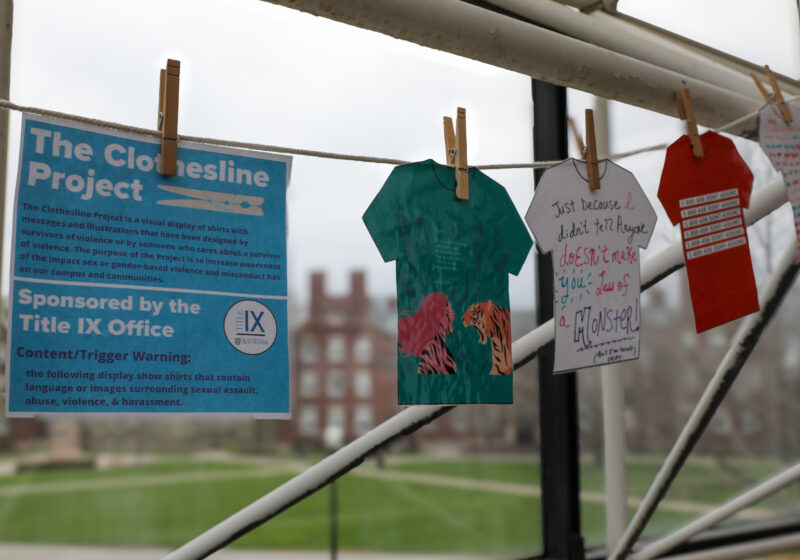If you have never read one of my columns before, I’ll bring you up-to-date: I enjoy challenging what is considered fashionable. So I was thrilled to come across a recent New York Times article, “The Campus as Runway,” about a new wave of college women who actually care about how they dress.
“The campus is their runway — a place to show off a style sense that is derived in part from their friends but more often attained through a click of a mouse,” fashion reporter Ruth La Ferla stated in her article.
And then comes the unavoidable discussion of the influence of technology and its facilitation of a global fashion conversation.
I respect many points made in the article. Thrift shopping, budgeting wardrobe expenses by shopping at TJ Maxx and Forever 21 and participating in the online fashion revolution via street-style blogs and live-feed fashion shows are all admirable qualities in a young fashionista. Even wearing heels in a library is, indeed, a feat worthy of exultation — I love seeing the looks on people’s faces when you clunk around the Periodical Reading Room in platforms.
That being said, there are two inconsistencies in this article, which are not faults of the writer (who is a distinguished fashion reporter and one I would be wise not to cross). Rather, the fault lies with some of the students interviewed: They confuse having style with following trends and exchanging styles with stealing.
First of all, you can’t steal a trend — there’s a reason it’s a trend, and that’s because hordes of people are following it. So if you see a person wearing army pants and flip flops two days after you did, I promise they are not robbing your style bank.
Julie Soffen, one of the young women featured in the article, is described as having “trends on [her] radar,” evidenced by a “creamy, quilted chain bag” and a “faux Burberry scarf.”
I respect her attention to trends, but I was immediately turned off by her polarizing comments.
“Some of us like to make an effort when we dress,” she said.
After throwing “an acidic glance” at her colleagues, she added, “They think that if they rock it with a $3,000 purse, that makes it work … but it doesn’t.”
Now, I don’t know Soffen, but wearing a faux Chanel bag with a faux Burberry scarf does not make one fashionable or interesting. No more interesting, I think, than someone who wears a $3,000 purse with their casual outfit. You should spend energy honing your own personal style and not rating the styles of others.
A senior from SUNY Purchase Jamie Pasquarella is also quoted in the article.
“People here get angry if someone is trying to cop their style,” she said. “Around here we are trying to define ourselves by the way we look.”
It is an interesting quote to think about. Surely, the way you dress is one way to define who you are — as a ritual of what you put on your body, as a way to visually distinguish yourself from others, as a display of fashion savvy or, conversely, as a display of fashion apathy.
Fashion complements yourself, but defining yourself by what you wear is a sticky and superficial road. Having a fashionable taste is not going to make you feel like a whole and fulfilled human being.
It can lift you up, it can be a fun distraction, an interesting diversion or a worthwhile anthropological discussion, but it is not going to construct your identity on its own.
It’s impossible to steal an entire personal style. Can you borrow a look? Sure. Can you take inspiration from someone’s unlikely combination of purple ankle socks and white oxfords? Absolutely. Are you stealing their identity? I would argue that no, you are not.
If “copping” style is such a horrific thing (as if seeing her own look “mirrored on her friends” is the fashionista’s worst nightmare), then why is it cool to get inspiration from style blogs? Is it too personal to rob looks vis-à-vis, but impressive and stealthy to look on the Internet?
Besides, since when was this considered “copping”? As far as I’m concerned, it’s flattery. Borrowing style from friends or fellow students is not plagiarism. There is integrity and creativity that comes with setting trends, responding to them and, dare I say, participating in a fashion discourse reflective of the academic dialogue we are privy to in class.
The campus as runway is an exciting thought, but maintaining the campus as a place of learning, fellowship and respect takes precedence. Meliora, style lovers.
Burritt is a member of the class of 2013.



